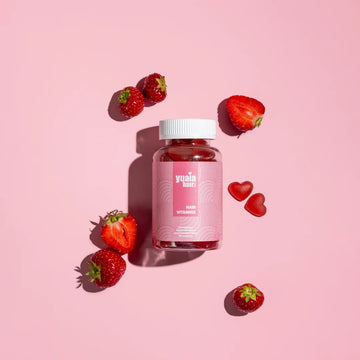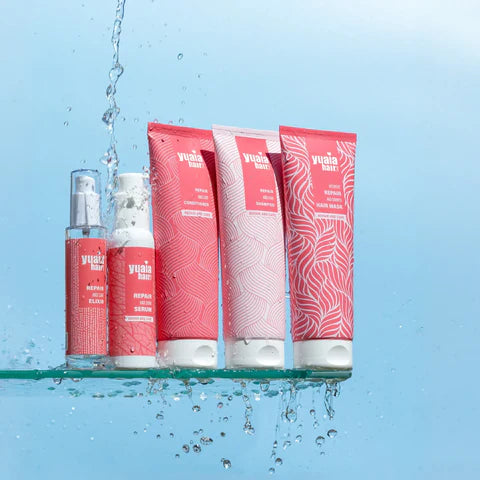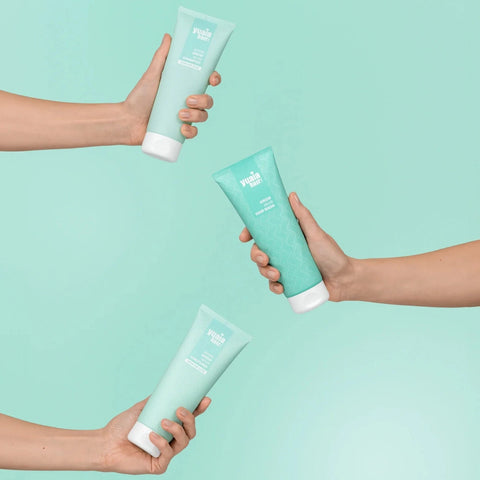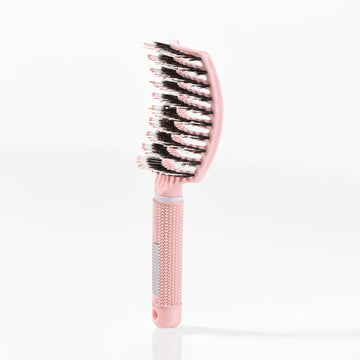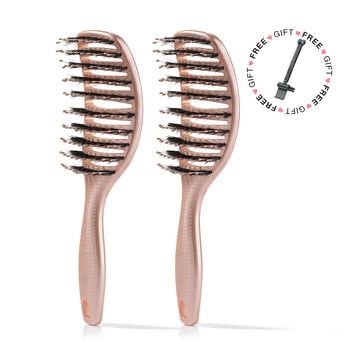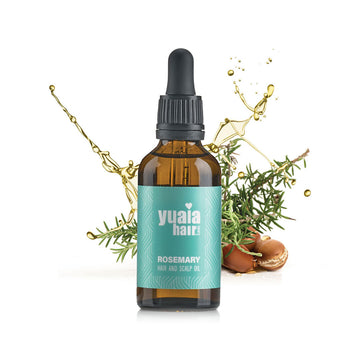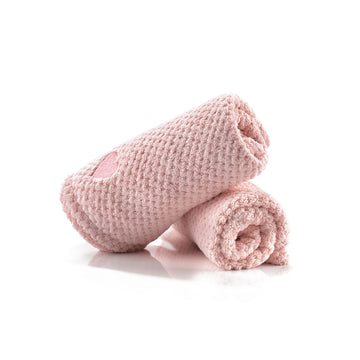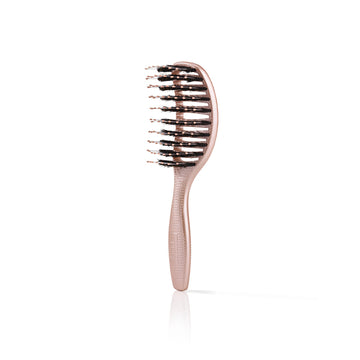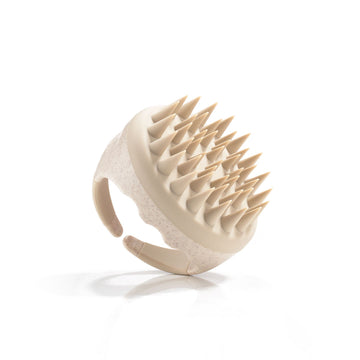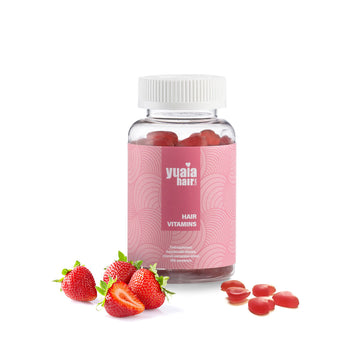
Lice in the hair: How to remove them thoroughly

by Nanna Bundgaard | 11. September 2023 | Reading time: 8 minutes
Read more about the authorHave you discovered lice in your hair and would like to know how to get rid of them effectively? In this article, we will guide you step by step through the process of identifying and treating lice. We will also give you tips for preventing future attacks. Read on to learn everything you need to know about hair lice treatment.
What are lice and how do you get infected?
Hair lice are tiny parasites that feed on human blood and can cause itching and irritation on the scalp. The lice lay eggs, also known as lice eggs or nits, close to the hair shafts. Lice are transmitted by direct contact between heads or through shared objects such as combs and hairbrushes. It is recommended to treat head lice with a special lice comb and use appropriate treatment methods to effectively remove both the adult lice and their eggs from the hair.
How do you spot lice in your hair?
If you suspect that you or your child has lice, it is important to know how to spot these tiny pests in the hair. Lice are small, wingless insects that live by sucking blood from human scalps. They can be difficult to detect as they are very small and fast. However, to facilitate the identification of lice in the hair, there are some signs you can be aware of.

Symptoms of lice in the hair
An itchy scalp is one of the most common symptoms of head lice. It may also be visible to see the lice or eggs, also known as nits, close to the hair root. If you experience irritation and redness on the scalp, this can also be a sign of an infection with head lice. It is important to comb the hair thoroughly to remove the lice and eggs and to seek treatment to combat the problem effectively.
How lice infect the hair
Direct contact with a person who has lice:
- Lice can easily spread from person to person by direct hard contact.
- If you come close to someone who has head lice, the risk of becoming infected is significant.
Sharing combs, brushes or hats with infected people:
- Lice can be transferred from an infected person's hair to your own by sharing combs, brushes or hats.
- It is important to avoid sharing these items to reduce the risk of infection.
Shared use of bedding or clothing:
- Lice can also spread through shared bedding or clothing.
- Be careful not to share clothing and wash everything thoroughly if lice infestation is suspected.
How to detect lice in the hair?
It is important to check the hair and scalp thoroughly for lice regularly. You can look for small, brown insects or white eggs on the hair strands. Using a lice comb can also be effective in finding and removing lice from the hair. Pay attention to itching and irritation of the scalp, as this is often a sign of the presence of lice. Besides itching of the scalp and visible lice or eggs close to the root of the hair, there are also other signs that may indicate the presence of lice in the hair. These include:
1. Redness and inflammation: Infection caused by lice bites can result in redness and inflammation of the scalp. This may be accompanied by tenderness and increased sensitivity in the area.
2. Sores and scabs: If the lice bite repeatedly, it can cause sores and scabs on the scalp. These sores can be tender and can cause discomfort or pain.
3. Unpleasant smell: Sometimes lice infection can lead to an unpleasant smell in the hair. This is often due to the excess production of sebum, which is an oily liquid produced by the scalp.
4. Visible light droppings: Lice often leave droppings in the hair, which may be visible as small black or dark brown spots on the scalp or on the hair shafts.
Check the hair thoroughly
Divide the hair into sections and examine it carefully with a magnifying mirror. Look for small, floating insects or eggs (the lice may look like black dots). Be sure to inspect the entire scalp, including the neck and ears.

Use a lice comb
Wash the hair and make sure it is damp - this makes it easier to remove the lice. Start from the scalp and gently comb downwards along the entire length of the hair. Clean the comb regularly by wiping it on a piece of paper or cloth. Combing the hair and especially in wet hair with a close comb is one of the best solutions, possibly in combination with a lice remedy.
How to remove lice from hair?
Using an effective lice treatment is essential to remove lice from the hair. Choose a lice treatment that contains the necessary chemicals to thoroughly kill and remove the lice. Carefully follow the instructions on the product for best results.
When the treatment with the lice cure is finished, it is important to comb the hair thoroughly. Use a fine-toothed comb or a special nit comb to remove any surviving eggs or nymphs from the hair. Repeat the process regularly over the next few weeks to ensure all lice and eggs are completely removed.
Use a lice treatment
Choose a lice treatment with an effective insecticide. Be sure to choose a lice treatment that contains a reliable insecticide known to be effective against lice and their eggs.
Carefully follow the instructions for use on the lice cure. It is important to follow the instructions carefully to achieve the best results. Apply the product evenly throughout the hair and gently massage it into the scalp. Let it work for the specified time.
Repeat the treatment after the recommended time if necessary. If you still see live lice or eggs after the first treatment, repeat the process after the recommended time period (usually about a week) to ensure complete removal of all the parasites.
Comb the hair through after the treatment
Use either a fine comb or a special lice comb to carefully remove both live and dead lice and eggs. Start at the scalp and work slowly down towards the tips of the hair. Remember to clean the comb thoroughly between coats to avoid reinfection.
Prevention of lice in the hair
Avoid close contact with infected people: To prevent lice in the hair, it is important to avoid close contact with people who already have lice. This includes sharing combs, brushes and hair accessories as well as avoiding physical contact with the head.
Wash and dry your hair properly: Proper washing and drying of your hair can help prevent lice infestation. Use a fine comb or a special nit comb for regular inspection for egg-laying lice. After washing, make sure to dry the hair completely, as lice thrive best in moist environments.
Make it difficult for lice to survive: The prevention of lice in the hair also includes steps to make the environment less friendly for these parasites. Pay attention to hygiene conditions with bedding, hats and pillows as well as things like teddy bears or fur animals, where the eggs can hide.
Avoid close contact with infected people
Keep your distance from people with lice. Avoid sharing combs, hairbrushes and hair accessories. Inform the school or institution if your child has lice.
Wash and dry your hair properly
Use a lice comb before and after washing your hair to remove live lice. Wash your hair thoroughly with an effective anti-lice shampoo. Dry the hair completely using hot air from a blow dryer.
- Go through the hair with a fine-toothed lice comb to remove live lice.
- Apply plenty of anti-lice shampoo throughout the hair and massage it in thoroughly.
- Rinse the shampoo out of the hair and repeat the process if necessary.
- Avoid using conditioner or other care products, as this can reduce the effect of the anti-lice shampoo.
- Then dry the hair completely using hot air from a blow dryer.
Always remember to follow the manufacturer's instructions on the product when using anti-lice treatment. By washing and drying correctly, you can effectively remove live lice from your hair.

Makes it difficult for lice to survive
- Check regularly for signs of lice in the whole family.
- Store jackets, hats and pillows separately to avoid the spread of eggs (nits).
- Vacuum furniture, bedding and the car thoroughly for any loose hairs or eggs.
Are lice in the hair dangerous to health?
Lice in the hair are generally not dangerous to health. Lice are small insects that live by sucking blood from human scalps. Although having lice can be uncomfortable and annoying, they usually do not pose a threat to health.
However, lice can cause itching and irritation to the scalp due to their bites and saliva. This itching can lead to scratching and infection if not treated properly. It is therefore important to treat lice as soon as they are detected to avoid these complications.
Another concern with lice is that they can spread from person to person, especially in close contact situations such as schools or kindergartens. Therefore, it is important to be aware of lice and take preventive measures to avoid spreading them.
Treatment of lice usually involves the use of special lice remedies and mechanical removal of lice and eggs using a fine comb. It is also recommended to wash bedding, bedding and other items that have been in contact with infected hair to prevent the spread of lice.
Get a 10% discount code sent to you
Receive the best tips and tricks for your hair from Lotte and Nanna 🥰
 2-4 day UK delivery
2-4 day UK delivery
 25.000+ satisfied customers
25.000+ satisfied customers
 Satisfaction Guarantee
Satisfaction Guarantee

